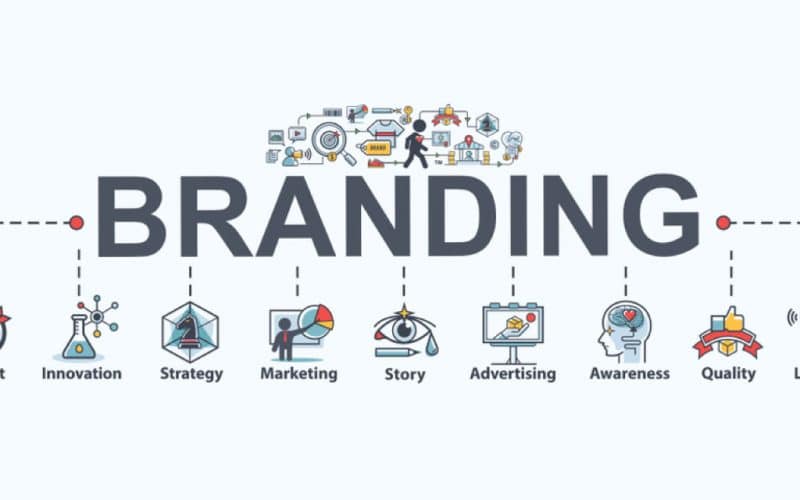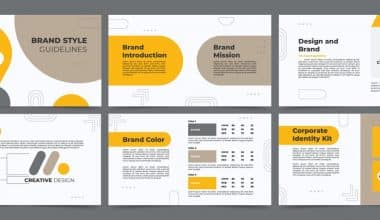When I originally began developing my brand, I battled to make it stand out in a congested market. Everything changed once I realized the power of brand personality. I was able to engage with my audience on a deeper level and create lasting impressions by developing a memorable brand personality. In this article, I’ll show you how to give your brand a memorable personality that resonates with your target audience. Let’s look at the fundamentals of brand personality.
What is Brand Personality?
Brand personality refers to the human features and characteristics associated with a certain brand. It’s how your brand would be viewed if it were a person. A Harvard Business Review study found that businesses with strong personalities can create emotional connections with consumers, leading to higher loyalty and advocacy.
When I first developed my brand’s personality, I imagined it as a kind, informed adviser. This method allowed me to connect more authentically and engage my audience in a way that was genuine and approachable.
Key Takeaways
Key Takeaways from the Article
- Personalizing your brand as if it were a person helps in building emotional connections and loyalty.
- Brand personality can be categorized into five key dimensions: sincerity, excitement, competence, sophistication, and ruggedness.
- Key steps include defining your brand’s core values, understanding your audience, creating a brand archetype, developing a consistent brand voice, and sharing your brand story.
- A well-defined brand personality positively influences customer perception by creating an emotional connection that leads to higher customer loyalty and advocacy.
- Utilizing a Brand Personality Template can streamline the process of defining and communicating your brand’s personality.
Why Brand Personality Matters
A distinctive brand personality distinguishes your brand from competitors and makes it more appealing to your target audience. According to a Sprout Social survey, 64% of customers want brands to connect with them, and 55% prefer to trust brands that match their beliefs.
Consider brands like Apple and Nike. Apple’s personality is inventive and sleek, whereas Nike’s is inspiring and motivating. These individual personas allow them to connect with their viewers on an emotional level.
Dimensions of Brand Personality
Jennifer Aaker defines brand personality in five dimensions: honesty, excitement, competence, sophistication, and ruggedness.
These five pillars can serve as starting points for determining your brand’s personality.
However, there will be distinct personality qualities that fall under each bigger dimension, and the more detailed you can be in determining which traits belong to your brand, the more authentic and unique its personality will be.
Now, let’s look at some specific personality traits that fit into each dimension:
Sincerity-related traits:
- Wholesomeness
- Trustworthiness
- Honesty
- Authenticity
- Cheerfulness
Traits associated with excitement:
- Passion
- Adventurousness
- Enthusiasm
- Boldness
- Imagination
- Daring
Competence-related traits:
- Intelligence
- Dependability
- Success
- Principled
- Conscientious
Sophistication-related traits:
- Elegance
- Composure
- Worldliness
- Confidence
- Tact
Ruggedness-related traits:
- Toughness
- Athletic and sturdy
- Outdoorsy
- Reliable
Steps for Developing a Memorable Brand Personality

Step #1. Define your brand’s core values
Your brand’s key beliefs form the basis of its personality. They determine how your brand behaves and communicates.
- Identify your brand’s most significant principles.
- Ensure that these principles are consistent with the requirements and wants of your target audience.
- Clearly express these ideals in your brand messaging.
Example: Patagonia’s basic beliefs include environmental responsibility and sustainability, which resonate strongly with its eco-conscious customers.
Step #2. Know Your Audience
To create a personality that resonates, you must first understand your target audience and their interests.
- Conduct market research to understand your audience’s demographics, preferences, and behaviors.
- Gather data through surveys, focus groups, and social media listening techniques.
According to a Deloitte survey, businesses that prioritize customer experience are 60% more profitable than those that do not.
Step #3. Create a Brand Archetype
Archetypes are universal characters that help establish the personality of your brand. They give a foundation for your brand’s communication and behavior.
Common Archetypes: –
- The Hero: Motivates and inspires (e.g., Nike)
- The Caregiver: Provides nurturing and support (e.g., Johnson & Johnson)
- The Innovator: Creates and pioneers (e.g., Apple)
When I chose the “Explorer” archetype for my brand, it influenced my marketing efforts to be more adventurous and bold, reflecting my audience’s drive for discovery.
Step #4. Develop a Consistent Brand Voice
Your brand voice is the way you express your brand personality. It should remain consistent across all platforms and touchpoints.
- Steps: – Establish the tone and style for your brand’s communication.
- Ensure your messaging is consistent throughout social media, website content, customer service, and advertising.
Lucidpress discovered that consistent brand presentation can improve sales by up to 23%.
Step #5. Share Your Brand Story
A compelling brand story humanizes and connects with your target audience. It should convey your brand’s personality and ideals.
- Create a story highlighting your brand’s path, obstacles, and achievements.
- Utilize storytelling techniques such as conflict, resolution, and character development.
Example: TOMS Shoes narrates the narrative of its founder’s trip to Argentina, where he witnessed children without shoes, which inspired the company’s One for One approach.
Let’s look at a few instances to see how brand personality permeates marketing materials.
Brand Personality Examples
#1. Nike
Nike’s marketing materials, from its tagline “Just Do It” to its mission statement “To inspire and innovate for every athlete in the world,” evoke enthusiasm, passion, and energy.
You know who Nike would be in person. A sports fanatic, an active athlete, and someone creative and forward-thinking. Nike, as an individual, is interested in the latest and greatest in terms of wellness and fitness.
Consider how this impacts Nike’s marketing strategy. Nike’s Instagram caption reads, “No more waiting…”
The visuals and videos on Nike’s website and social media accounts are vibrant and fast-paced, with Olympic participants jogging and Serena Williams striking a racquet.
And if you watch a Nike commercial on television, you’ll see the same personality: someone who is enthusiastic, active, and ready to go.
#2. Chanel
If you want a brand personality that exudes sophistication, go no further than Chanel.
To begin, look at the brand’s mission statement: “To be the Ultimate House of Luxury, defining style and creating desire, now and forever.”
Consider their Instagram page: the Chanel team uses gentle blues, light yellows, and a lot of black space to bring attention to a single focus point.
Their minimalist vintage theme effectively conveys a smart brand personality.
You know who Chanel is – Chanel as a person is someone passionate about fashion, is really polished, never says the wrong thing, and is both sophisticated and global.
#3. REI
This brand’s personality is much different from Chanel’s. Let’s take a closer look.
REI is rough, outdoor-oriented, and tough.
The homepage of their website currently reads, “Celebrate the strength in you,” and the About Us page reads, “At Recreational Equipment, Inc. (REI), we believe that a life spent outdoors is a life well lived! We believe that in the wild, untamed, and natural environments, we find our greatest selves, thus our mission is to instill a lifetime love of the outdoors in everyone.”
REI is your “Earthy-crunchy” friend who enjoys camping, hiking, swimming, and anything else that involves being outside. Because of their love of the outdoors, REI is also environmentally conscious and only buys sustainable products.
#4. Volvo
Volvo, as a person, is dependable, strong, and trustworthy. The brand takes pride in “their years of leadership in automotive safety” and is known for its discipline, responsibility, and principled behavior.
Take a look at the following Volvo commercial, which focuses on car safety above everything else:
Furthermore, if you look at Volvo’s About Us page, you’ll see statements like “For nearly a century we have been making life easier, better, and safer with cutting-edge technology” and “Volvo Cars is a brand for people who care about the world we live in and the people around us” — all of which suggest a dependable personality.
While other auto dealerships may focus on a vehicle’s fancy amenities, Volvo remains devoted to one core value: safety.
What are the Different Types of Brand Personality?
A company’s brand personality provokes an emotional response from a certain market demographic, intending to motivate positive actions that benefit the organization. Five major categories of brand personality share a trait. They are excitement, genuineness, toughness, competence, and sophistication. Customers are more likely to buy a brand if its personality matches their own.
What is the Difference Between Brand Personality and Imagery?
A company’s brand personality is not to be mistaken with its images. A company’s imagery is a collection of creative materials that convey the tangible benefits of its brand. In contrast, a company’s brand personality directly establishes an emotional association in the minds of its target consumer group. Imagery is one way that a firm communicates its brand personality.
The Function of Templates in Developing Brand Personality
A Brand Personality Template can help you define and communicate your brand’s personality more efficiently. This template can help you define fundamental principles, analyze your target, create a brand archetype, and establish a consistent brand voice.
Ready to give your brand a memorable personality that connects with your audience? Download our comprehensive Brand Personality Template now to streamline your branding process and ensure consistency across all your communications.
How Does a Defined Brand Personality Affect Customer Perception?
A well-defined brand personality has a significant impact on customer perception since it helps to create an emotional connection between customers and the brand. When clients can identify with a specific set of features or characteristics connected with a company’s identity, they are more likely to create favorable impressions about it. This emotional relationship promotes client loyalty and advocacy.
Can I Alter My Brand’s Personality Over Time?
While it is possible to evolve or polish your brand’s personality over time, significant changes may confuse or alienate existing customers who have built perceptions based on your previous persona. Before progressively implementing changes based on market research and customer input, they must be thoroughly considered.
How Can Small Businesses Develop Their Own Distinct Brand Personality?
Small businesses can create a distinct brand personality by studying their target market and discovering the values, features, and characteristics that resonate with them. Conducting market research, assessing competition branding techniques, and soliciting client feedback are all important elements in developing a distinctive brand personality.
Is It Important for Every Firm to Have a Clear Brand Personality?
While not every firm officially defines its brand personality, having a well-defined character may be quite beneficial for any business. A clear brand personality distinguishes the company from competitors, helps create an emotional connection with customers, and guides a consistent message across all marketing platforms.
How Long Does It Take to Build a Strong Brand Personality?
Creating a strong brand personality is a continuous process that takes time and effort. It entails a thorough examination of your target market, competitor research, internal reflection on key beliefs, and long-term consistency in implementing your chosen features. The timeline may differ based on the complexity of your organization and the business mentorship assessment.
Conclusion
Developing a memorable brand personality is critical for interacting with your target audience and differentiating your brand. Building a powerful and relatable brand personality requires identifying your fundamental values, understanding your audience, developing a brand archetype, maintaining a consistent brand voice, and sharing your brand story. Have you started developing your brand’s personality? What obstacles have you encountered, and how did you overcome them?
Related Articles
- 10 Reputation Management Companies Every Brand Needs on Speed Dial
- Brand Identity 101: Getting the Basics Right From the Start
- The Power of Brand Monitoring Software: Unlocking Consumer Insights
- Brand Journalism: Everything You Should Know About
- Brand Pitch Email Templates: What Major Companies Use To Land 85% Of Their Clients






